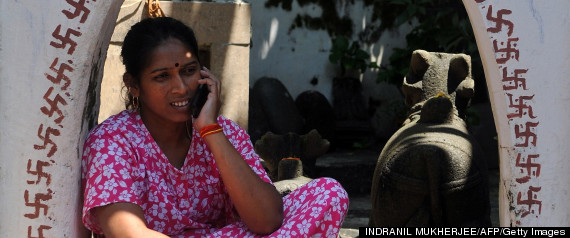
(AFP Photo)
The number of worldwide mobile phone subscribers will rise to 8.9 billion over the next five years, with 80% of these coming from developing countries, according to a report published by market research firm Strategy Analytics.
Subscriber rates in developing countries will grow at a compound annual rate of 7.5% between 2012 and 2017, the report also said. This “substantially faster” growth rate is contrasted with the 2.8% growth rate that will be seen in developed countries.
The report also singles out Nigeria, with the country experiencing mobile services revenue growth at a rate expected to be twice the worldwide average, which is predicted to remain at 2% through to 2017, according to Strategy Analytics’ figures.
Following up on the Mobile World Congress (MWC) tradeshow which took place last month, the report, entitled ‘Worldwide cellular user forecasts’, also predicts that the worldwide base of mobile subscriptions in China and India will constitute the bulk of emerging market subscriptions.
There will also be rapid growth in the Middle East and Africa, representing a huge opportunity for carriers, mobile makers and application developers, the report said.
While the majority of devices in developing markets are likely to be basic mobile phones, focused on talk and text, rather than smartphones, the report also notes a growing middle class population in Africa, noting that the African Development Bank (ADB) estimates that more than a third of Africa’s population in 2010, that is to say 350 million people, could be counted as middle class, compared to 220 million in the year 2000, giving smartphone makers a distinct opportunity to target this growing population segment.
“Of course there is still a lot of demand for basic products and services,” said Tom Elliott, Director of Emerging Markets Consulting, in a statement, “but the growing middle class is starting to demand more extensive data services on a widening range of Smartphones, high-end feature phones, and tablets.”
The report also noted how mobile phone maker Nokia has had some success with a low-end device strategy that has been seeking to narrow the distance between mobiles and smart phones, materialised in its Asha line of Series 40 handsets.
At the MWC, Nokia announced an $85 phone with a number ‘smart’ extra features, including the ability to share photos to social networking websites. Nokia has also focused on lowering the total cost of ownership of these quasi-smart devices, with long battery life and a cloud web browser which compresses data before delivering it to the user resulting in lower browsing costs, in order to help boost affordability.
Other operating systems are focusing on low-end consumers who cannot afford smartphones like the Samsung-backed OS, Mozilla’s HTML5 Firefox OS, and Canonical’s Ubuntu.
At the MWC tradeshow, Indian carrier Bharti Airtel recommended the industry introduce $30-priced smartphones in order to bring down the affordability barrier even lower.
Strategy Analytics concluded that mobile subscriptions are growing faster than the global population.
By the beginning of 2014 it predicts there will be more mobile connections than people in the world.



